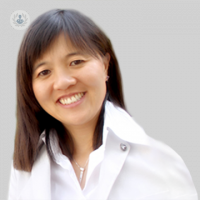Dentofacial-related self-harm in adolescents: what you need to know
Autore:We recently spoke Dr Moira Wong, a highly revered and experienced orthodontist, to talk to her about self-harm and bullying surrounding adolescents and the appearance of their teeth. Find out below what exactly interceptive orthodontics is, and what the main benefits of it are.

What are the statistics relating to dentofacial-related self-harm?
A study has been published in the American Journal of Orthodontics looking at self-harm in adolescents. The study investigates the prevalence of self-harm in a representative group of school children and the contribution of dentofacial appearance.
This study showed a prevalence of reported self-harm being 26.9 per cent among children aged between 13 and 14 years old. Interestingly, half of the children reported that the self-harm was a result of dentofacial features.
What are the most common dentofacial features that lead to self-harm and bullying?
The three most common dentofacial features contributing to self-harm and self-harm as a result of bullying were tooth colour and shape, spacing between the teeth or missing teeth, and prominent maxillary anterior teeth.
When can children get braces?
There is an idea that floats around stating that children cannot get braces until all their adult teeth are through. This applies to some children with a certain jaw relationship and a certain malocclusion.
This does not, however, apply to all children, especially those with more severe malocclusions. It also does not apply to children with prominent teeth where early treatment reduces the incidence of trauma to the front teeth.
What exactly is interceptive orthodontics?
This treatment is aimed at reducing the complexity of orthodontic treatment at a later stage when all the adult teeth have grown. This can result in avoiding extractions as a part of later orthodontic treatment, but is not always the case.
This is known as phase one orthodontics and is typically carried out between the ages of eight and 10 years old. Phase two orthodontics is then carried out in the adult dentition when the child is 11 years old and above.
What are the main advantages of carrying out interceptive orthodontics?
The advantage of carrying out phase one interceptive orthodontics not only reduces treatment complexity at a later stage, but it also means that children that are self- conscious of their crooked teeth can undergo orthodontic correction before it becomes an issue. This clearly has a positive effect on their mental health and overall self-confidence.
Dr Moira Wong is an accomplished London-based orthodontist who specialises in paediatric orthodontics. If your child is struggling with self-confidence issues due to the appearance of their teeth, book a consultation with Dr Wong today via her Top Doctors profile.


